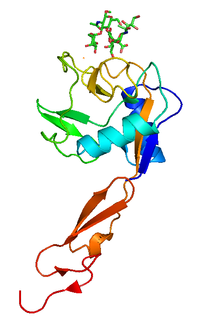
Photo from wikipedia
Reduced oxygen tensions experienced at high altitudes are thought to predispose to thrombosis, yet there are few studies linking hypoxia, platelet activation, and thrombosis. Reports of platelet phenotypes in hypoxia… Click to show full abstract
Reduced oxygen tensions experienced at high altitudes are thought to predispose to thrombosis, yet there are few studies linking hypoxia, platelet activation, and thrombosis. Reports of platelet phenotypes in hypoxia are inconsistent, perhaps due to differing degrees of hypoxia experienced and the duration of exposure. This study aimed to investigate the relationship between soluble P-selectin, a marker of platelet activation, and von Willebrand factor (vWF) on exposure to hypoxia. We measured plasma concentrations of P-selectin and vWF in sixteen healthy volunteers before, during and after the APEX 2 expedition. APEX 2 consisted of a non-exertional ascent to 5,200 m, followed by 7 consecutive days at high altitude. We showed that high altitude significantly increased mean plasma P-selectin and vWF compared to pre-expedition levels. Both plasma marker levels returned to baseline post-expedition. We found a strong positive correlation between vWF and P-selectin, but no association between P-selectin and platelet count. Our results are consistent with previous work showing evidence of platelet activation at high altitude and demonstrate that the rise in P-selectin is not simply due to an increase in platelet count. As vWF and P-selectin could be derived from either platelets or endothelial cells, further work assessing more specific markers of endothelial activation is proposed to provide insight into the source of these potential pro-thrombotic biomarkers at altitude.
Journal Title: Frontiers in Physiology
Year Published: 2022
Link to full text (if available)
Share on Social Media: Sign Up to like & get
recommendations!